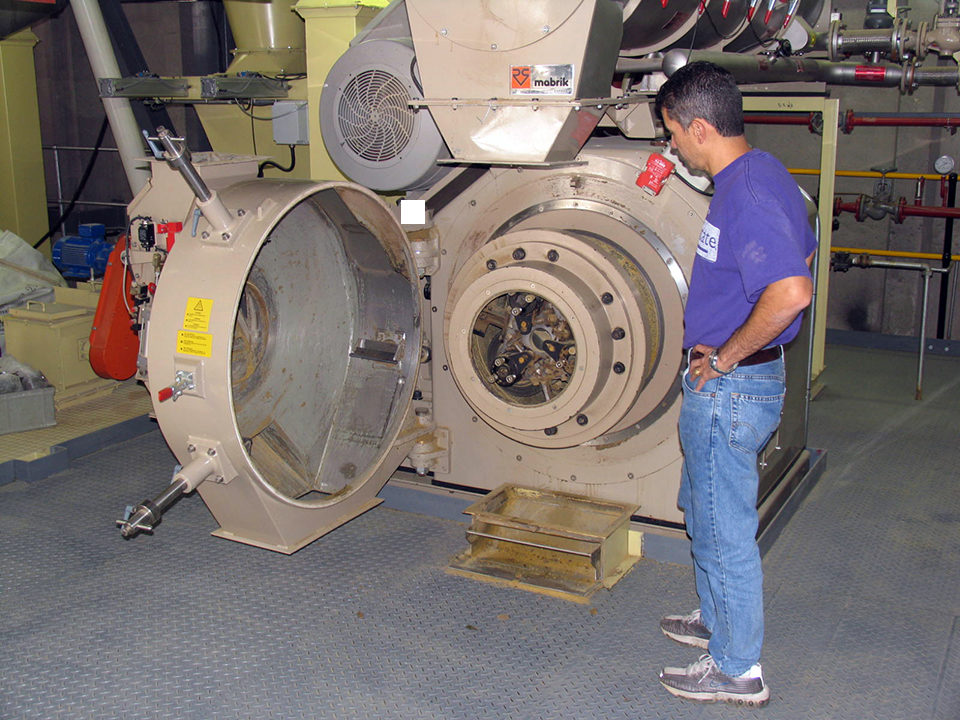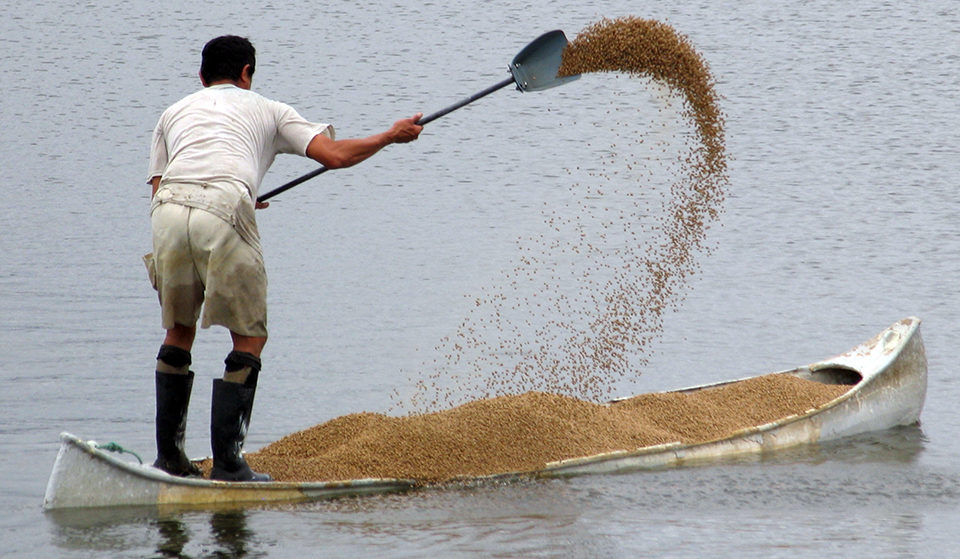Near-term challenges, long-term benefits

The issue of “sustainable seafood” has been important for the seafood supply chain for several years, but the emphasis has largely been on obtaining fish directly for human consumption from sustainable sources. In recent years, aquaculture has hugely increased in importance in terms of supplying seafood, but questions around the sustainability of such products have tended to focus on local environmental impacts and human health.
However, recent developments throughout the aquaculture supply chain and among campaign groups indicate that this is changing, and wider sustainability questions are now being more forcefully raised. One aspect of this trend is a new interest in the sustainability of the industrial or forage fisheries that supply the feed ingredients for fish farms.
Recent survey
Sustainable Fisheries Partnership, an industry-facing non-governmental organization (NGO), carried out a review of the topic through a telephone and Internet survey of retailers, processors and NGOs to find out where the debate was going and what it might mean for the aquaculture supply chain.
The review found high interest in the ecocertification of aquaculture, and all current efforts – for example, the Global Aquaculture Alliance Best Aquaculture Practices certification program and the World Wildlife Fund-sponsored Aquaculture Dialogues — are attempting to include sustainability criteria for feeds which reference the status of source fisheries.
Business-to-business assurance schemes with direct relevance to aquaculture feeds are also emerging. The International Fishmeal and Fish Oil Organisation recently launched a Global Standard for Responsible Supply that dedicates considerable attention to the status and management of the fisheries that provide the meal and oil.
Many large retailers see the sustainable aquaculture feed issue as a major challenge to be addressed in the short to medium term. Several retailers already have their own operational standards, and some even ban specific fish from use in aquaculture feeds. Sainsbury’s in the United Kingdom forbids the use of northern blue whiting in feeds for their salmon products because of concerns about the management of the stock.
The survey also found that aquaculture feed manufacturers are aware of the industrial fisheries issue to varying degrees. Certainly those supplying northern salmon producers have high levels of awareness and make statements concerning sustainability of source fisheries on their websites. Several manufacturers stated they could provide feeds that meet sustainability criteria set by customers, and at least one actively avoided using fish from badly managed stocks but did not publicize this effort.
Alongside so much interest in assuring the sustainability of feed source fisheries is a parallel interest from NGOs in campaigning on the issue and challenging retailers and others about the sustainability of aquaculture products via the feed issue. The telephone survey of principal NGOs found considerable interest and a consistent response that sustainable aquaculture feed was “among the top three issues” that concerned them about aquaculture.

Stakeholder concerns
Having established that the issue of sustainable aquaculture feeds is of rising prominence, the Sustainable Fisheries Partnership (SFP) investigation also discovered some causes of concern among stakeholders. There was confusion about which certification standards will ultimately emerge in the marketplace and concern around the problems associated with working to more than one operational standard.
Visibility down the supply chain was a real problem for some species. While relatively centralized aquaculture operations like salmon production have high visibility in terms of supplier standards and source fisheries for feeds, others don’t. Shrimp was cited as particularly problematic in terms of identifying the source fisheries, particularly given the role of local, unregulated fisheries that supply “trash fish” to some shrimp farms in Southeast Asia. Many retailers identified sustainable shrimp feeds as a major challenge which has yet to be fully addressed.
There were real concerns throughout the supply chain about reputational risk. High-profile media campaigning around wild fisheries in the United States, European Union and elsewhere has resulted in negative publicity for some retailers, processors and even the catching sector. Aquaculture has also been challenged in the past on issues like mangrove destruction for shrimp farms and the effects of open-water salmon pens on wild salmon species. The issue of sustainable aquaculture feeds seems like a new “front” in the public relations conflict between NGOs and industry.
Suggested actions
Given the findings of the investigation, it’s clear there are real concerns within the aquaculture supply chain about an issue that is rising in prominence and may prove difficult to effectively manage in the short term. In the light of this uncertainty, SFP suggests that stakeholders within the supply chain adopt three actions.
- Work to achieve effective visibility of the entire supply chain, including the origin and conservation status of marine species used in feed formulations. This can be tough, but there are partners that can help. SFP, for instance, operates a free database of global fisheries at www.fishsource.org.
- Adopt specific policies around aquaculture, particularly feed ingredients, and communicate these policies to other stakeholders. It’s important to get all parts of the supply chain working on this issue, and many feed manufacturers are already prepared to provide detailed information on the sustainability of wild fish ingredients.
- Create pressure for the improvement of aquaculture sustainability and particularly the management of fisheries that provide fishmeal and oil. This could include participation in an industry group dedicated to improving a specific fishery. SFP often convenes such groups, but others play this role, as well.
The whole subject of sustainable aquaculture feeds is a fast-moving area where there is a phenomenal amount of activity throughout the supply chain. No one is yet fully clear about what will constitute industry norms or how expectations of sustainability might vary from species to species. Given this level of uncertainty, stakeholders will simply need to do their best rather than aim for perfection.
New BAP feed mill standards to address ingredient sustainability
The Global Aquaculture Alliance Best Aquaculture Practices (BAP) certification program takes a comprehensive approach to responsible aquaculture that early on identified the need for standards for aquafeed producers. This process has almost reached fruition, as the new BAP feed mill standards recently completed a 60-day period of public consultation. The range of comments from industry, academia and NGOs is being processed by the Feed Mill Technical Committee. All comments and responses will be published on the GAA website.
The new standards will address the critical issue of fishmeal and fish oil conservation in two ways: by insisting on responsible sourcing of meal and oil and by promoting transparency and efficient usage. Fishmeal and fish oil supplies must be fully traceable and not come from fish stocks independently identified as unsustainable.
The standards reference sources of fishery assessment information like Sustainable Fisheries Partnership’s Fishsource, Marine Stewardship Council and the responsible sourcing initiative being rolled out by the International Fishmeal and Fish Oil Organisation. They also require feed producers to indicate the inclusion rates of fishmeal plus fish oil in feeds. Requiring this transparency enables farmers to calculate their fish in:fish out ratio, a statistic used to measure ecological efficiency.
(Editor’s Note: This article was originally published in the January/February 2010 print edition of the Global Aquaculture Advocate.)
Author
-
Blake Lee-Harwood
Sustainable Fisheries Partnership
423 Washington Street, 5th Floor
San Francisco, California 94111 USA[109,111,99,46,116,101,110,114,101,116,110,105,116,98,64,100,111,111,119,114,97,104,101,101,108,101,107,97,108,98]
Related Posts

Aquafeeds
A new nutrient for aquaculture, from microbes that consume carbon waste
Biotechnology firm NovoNutrients aims to produce a line of nutraceutical aquafeed additives as well as a bulk feed ingredient that can supplement fishmeal. Its process includes feeding carbon dioxide from industrial gas to a “microbial consortium” starring hydrogen-oxidizing bacteria.

Aquafeeds
F3 takes on a new challenge – fish oil alternatives
Building off the success and excitement of the fish-free aquaculture feed cash-prize contest that concludes this fall, the F3 Challenge has set its sights on a new target: fish oil alternatives.

Aquafeeds
IFFO RS: Responsible fishmeal sourcing crucial for aquaculture
Libby Woodhatch says responsible sourcing and safe raw material production is “vital” if fishmeal and fish oil are to remain credible aquafeed ingredients.

Innovation & Investment
Is Africa a ‘new Asia’ for aquaculture?
Now is the time for investment in efficiency improvements, better genetics, health management and more competition and innovation in the feed sector. Let's not perpetuate the myth that just a little more investment in some technical solutions will solve the problems in Africa.


